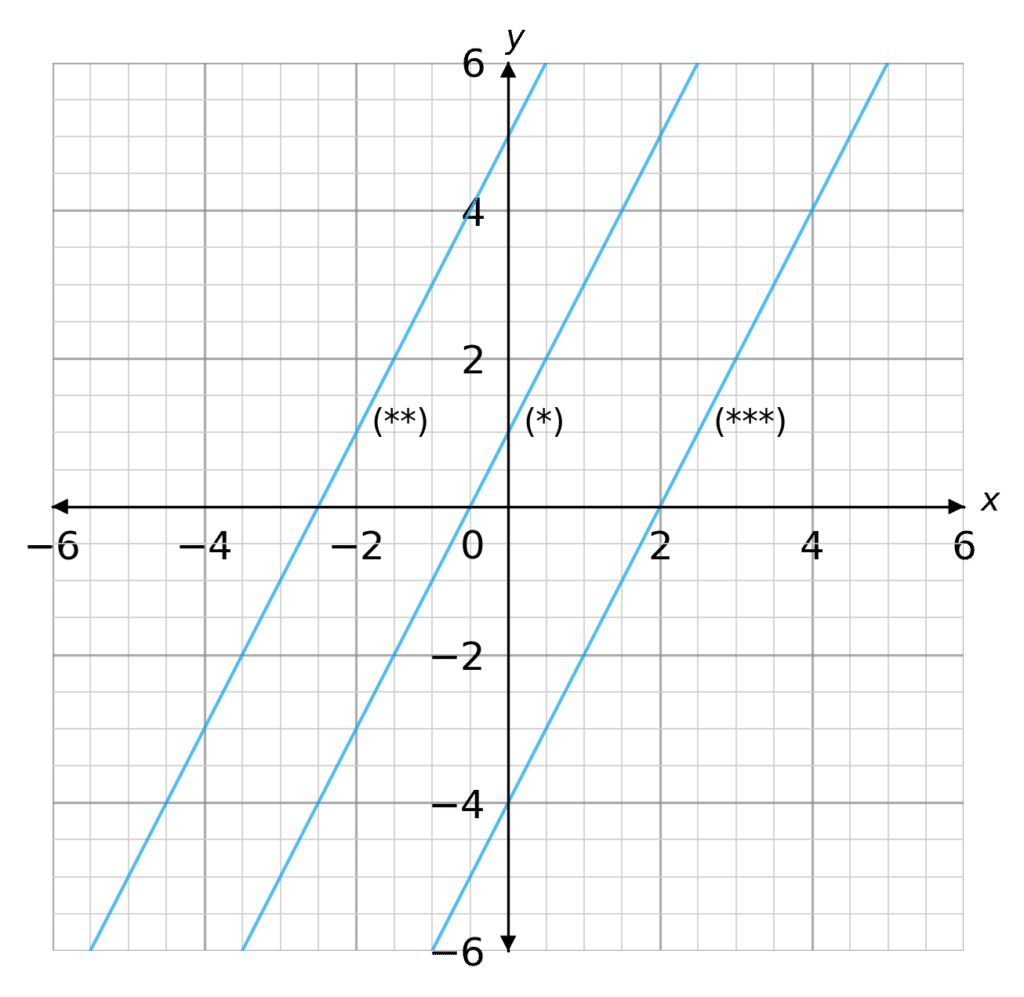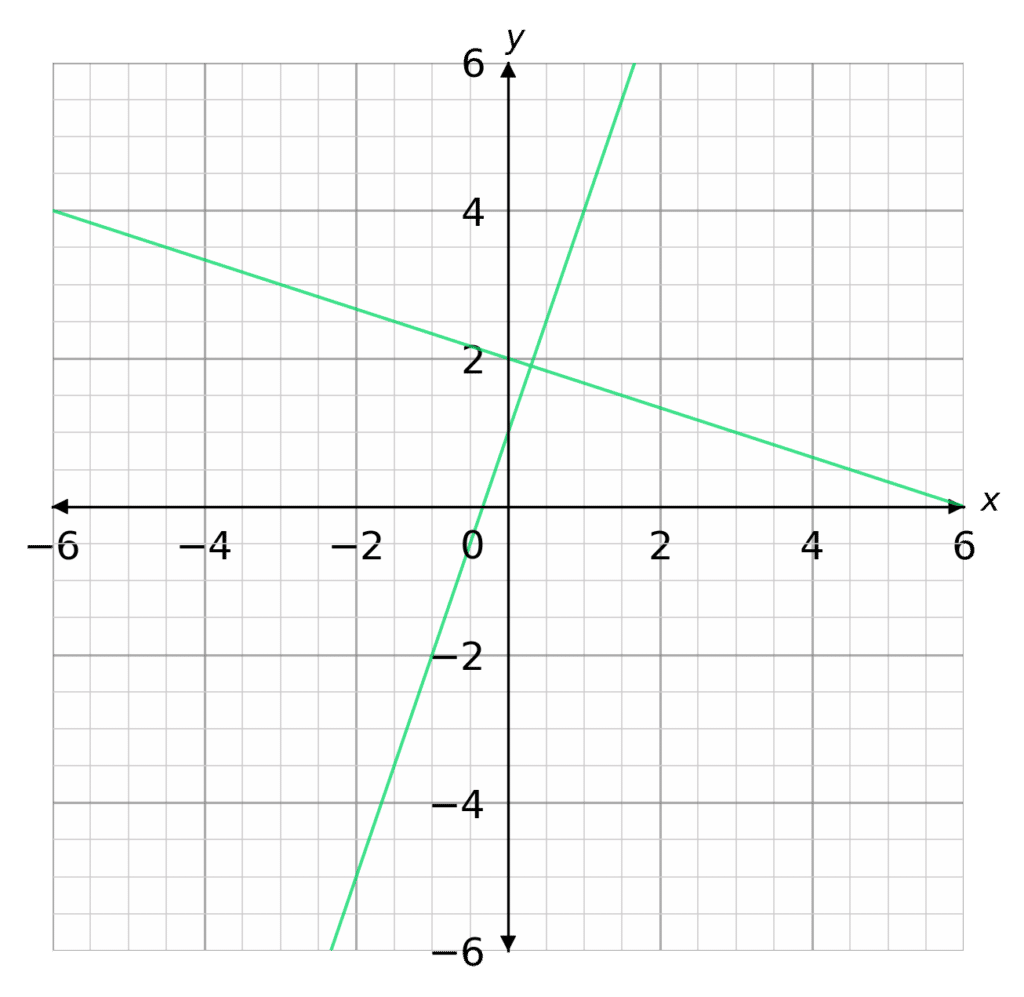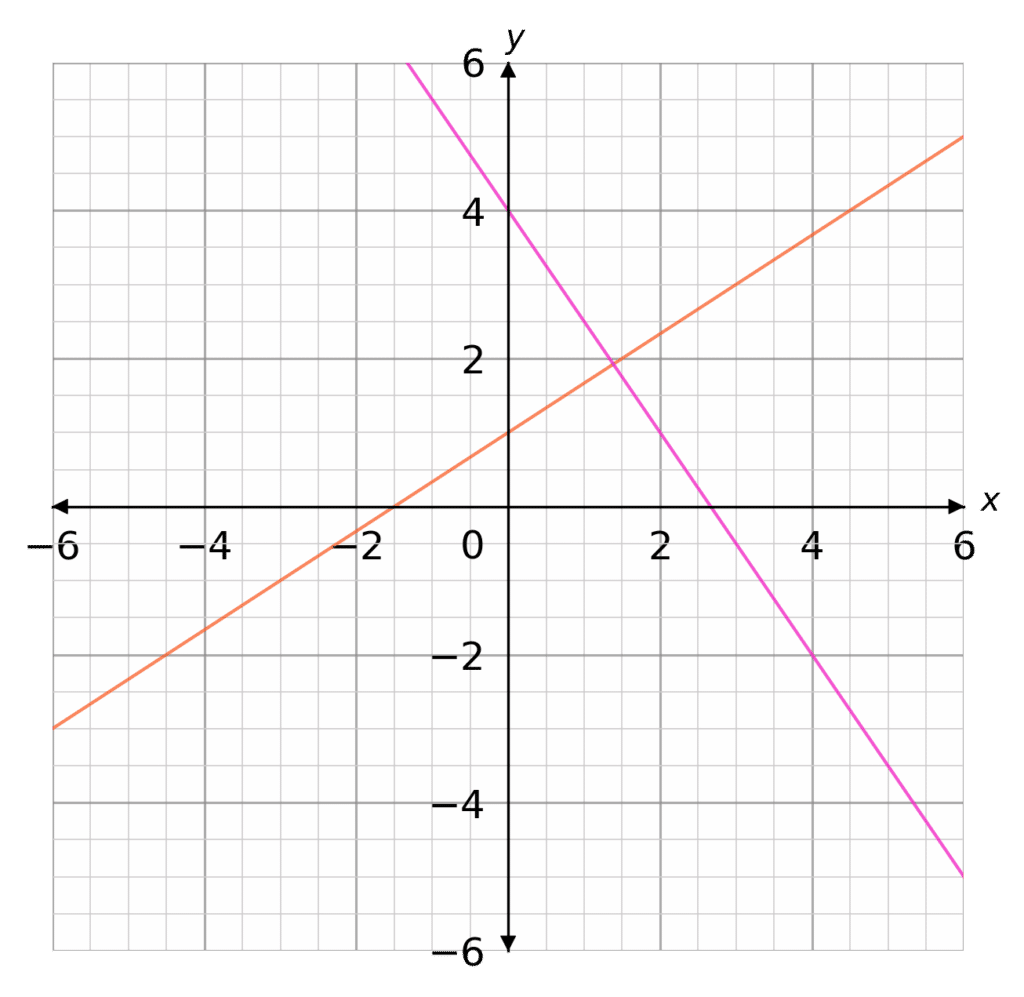Parallel and Perpendicular Lines
Parallel and Perpendicular Lines Revision
Parallel and Perpendicular Lines
Parallel Lines – are always the same distance apart and never meet (they have the same gradient).
Perpendicular Lines – meet at a right angle (the gradients of perpendicular lines multiply to -1).
Before continuing this topic, recap the following:
Parallel Lines – Same Gradient

Parallel lines have the same gradient.
Equation of a straight line: y=\textcolor{#10a6f3}{m}x+c
\textcolor{#10a6f3}{m} \rightarrow gradient
c \rightarrow y- intercept
For lines to be parallel, the value of \textcolor{#10a6f3}{m} must be the same.
Let’s take a look at the following lines:
y=\textcolor{#10a6f3}{2}x+1 (*)
y\textcolor{#10a6f3}{-2}x=5 (**)
y=\textcolor{#10a6f3}{2}x -4 (***)
The second equation (**) must be rearranged into the form
y=\textcolor{#10a6f3}{m}x+c , before comparing the gradients:
y=\textcolor{#10a6f3}{2}x+5
These lines all have a gradient of \textcolor{#10a6f3}{2} \, (m=2) . These straight line equations are shown on the graph to the right.
Perpendicular Lines – Right Angles

Perpendicular lines meet at a right angle. When we multiply the gradients of a pair of perpendicular lines they multiply to \textcolor{#00d865}{-1}.
Another way of looking at this concept is to think of the perpendicular gradient as the ‘opposite sign and reciprocal’.
For instance, let’s say we have a straight line with a gradient: \textcolor{#00d865}{m=2}
Then the perpendicular gradient would be: \textcolor{#00d865}{m=-\dfrac{1}{2}}
\textcolor{#00d865}{2}\times\textcolor{#00d865}{-\dfrac{1}{2}}=\textcolor{#00d865}{-1}Let’s take a look at the following lines:
y=\textcolor{#00d865}{3}x+1
y=\textcolor{#00d865}{-\dfrac{1}{3}}x+2
These lines are perpendicular as: \textcolor{#00d865}{3}\times\textcolor{#00d865}{-\dfrac{1}{3}}=\textcolor{#00d865}{-1}. These straight line equations are shown on the graph to the right.
Example 1: Parallel Lines

Find the equation of a straight line that is parallel to \textcolor{#f95d27}{y=3x+5} and passes through (1,-2)
Equation of the parallel line: y=3x+c
[3 marks]
c is the y \,intercept and can take any value. However, because we know the line passes through the coordinate (1,-2), we can find the exact value of c
To do this, we substitute x=1 and y=-2
-2=3(1)+c \rightarrow c=-5 \rightarrow \textcolor{#f21cc2}{y=3x-5}Example 2: Perpendicular Lines

Find the equation of a straight line that is perpendicular to
\textcolor{#f95d27}{y=\dfrac{2}{3}x+1} and passes through (2,1)
[3 marks]
Equation of the perpendicular line: y=-\dfrac{3}{2}x+c
c is the y \,intercept and can take any value. However, because we know the line passes through the coordinate (2,1), we can find the exact value of c
To do this, we substitute x=2 and y=1
1=-\dfrac{3}{2}(2)+c \rightarrow c=4 \rightarrow \textcolor{#f21cc2}{y=-\dfrac{3}{2}x+4}Parallel and Perpendicular Lines Example Questions
Question 1: From the following equations of a straight line, state which pair are parallel and another pair which are perpendicular.
[2 marks]
a) y=2x+5
b) \dfrac{y+3x}{2}=3
c) 2y+6=4x
d) y=\dfrac{1}{3}x+9
After some rearrangement, to get the equations in the form of y=mx+c, we get the following:
a) y=2x+5
b) y=-3x+6
c) y=2x-3
d) y=\dfrac{1}{3}x+9
a) and c) are parallel, as the gradients are the same.
b) and d) are perpendicular, as when you multiply the gradients together you get -1.
Question 2: Find the equation of a straight line that is parallel to y-8x=11 and passes through (2,5)
[2 marks]
We first need to rearrange the equation into the form of y=mx+c:
y=8x+11Equation of parallel line:
y=8x+cSubstituting x=2 and y=5
5=8(2)+c \rightarrow c=-11 \rightarrow y=8x-11Question 3: Find the equation of a straight line that is perpendicular to 5y+x=50 and passes through (2,12)
[2 marks]
We first need to rearrange the equation into the form of y=mx+c:
y=-\dfrac{1}{5}x+10Equation of perpendicular line:
y=5x+cSubstituting x=2 and y=12
12=5(2)+c \rightarrow c=2 \rightarrow y=5x+2You May Also Like...

MME Learning Portal
Online exams, practice questions and revision videos for every GCSE level 9-1 topic! No fees, no trial period, just totally free access to the UK’s best GCSE maths revision platform.